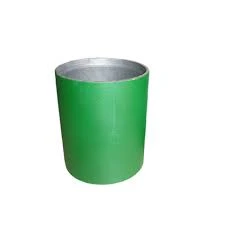- Afrikaans
- Albanian
- Amharic
- Arabic
- Armenian
- Azerbaijani
- Basque
- Belarusian
- Bengali
- Bosnian
- Bulgarian
- Catalan
- Cebuano
- Corsican
- Croatian
- Czech
- Danish
- Dutch
- English
- Esperanto
- Estonian
- Finnish
- French
- Frisian
- Galician
- Georgian
- German
- Greek
- Gujarati
- Haitian Creole
- hausa
- hawaiian
- Hebrew
- Hindi
- Miao
- Hungarian
- Icelandic
- igbo
- Indonesian
- irish
- Italian
- Japanese
- Javanese
- Kannada
- kazakh
- Khmer
- Rwandese
- Korean
- Kurdish
- Kyrgyz
- Lao
- Latin
- Latvian
- Lithuanian
- Luxembourgish
- Macedonian
- Malgashi
- Malay
- Malayalam
- Maltese
- Maori
- Marathi
- Mongolian
- Myanmar
- Nepali
- Norwegian
- Norwegian
- Occitan
- Pashto
- Persian
- Polish
- Portuguese
- Punjabi
- Romanian
- Russian
- Samoan
- Scottish Gaelic
- Serbian
- Sesotho
- Shona
- Sindhi
- Sinhala
- Slovak
- Slovenian
- Somali
- Spanish
- Sundanese
- Swahili
- Swedish
- Tagalog
- Tajik
- Tamil
- Tatar
- Telugu
- Thai
- Turkish
- Turkmen
- Ukrainian
- Urdu
- Uighur
- Uzbek
- Vietnamese
- Welsh
- Bantu
- Yiddish
- Yoruba
- Zulu
Understanding Bull Plug Pipe Fittings and Their Applications in Plumbing and Industrial Systems
Understanding Bull Plug Pipe Fittings An Essential Component in Piping Systems
In the realm of plumbing and piping systems, the bull plug pipe fitting is a significant yet frequently overlooked component. Whether in industrial applications, municipal piping, or residential plumbing systems, understanding the bull plug and its applications can help ensure proper functioning and maintenance of piping networks.
What is a Bull Plug?
A bull plug is a type of pipe fitting characterized by its solid end, which is used to close off the end of a pipe. Typically crafted from materials such as stainless steel, brass, or PVC, bull plugs are designed to withstand various types of pressure and environmental conditions. Their primary function is to provide a secure seal at the end of a pipe, effectively blocking the passage of fluids or gases.
Applications of Bull Plugs
Bull plugs are widely used across different sectors for various applications. Here are a few key areas where bull plugs play an essential role
1. Water Supply Systems In municipal and residential water supply systems, bull plugs can be used to seal off unused outlets or to close pipes temporarily during maintenance activities. They ensure that water flow is directed where it's needed, preventing leaks and wastage.
2. Industrial Facilities In manufacturing plants, bull plugs are often utilized in hydraulic and pneumatic systems. They help control the flow of fluids and gases, especially during maintenance or repair work. The ability to quickly seal off sections of the pipeline can be crucial for maintaining operational efficiency.
3. Wastewater Management In sewage and wastewater systems, bull plugs help manage the flow of waste. They can isolate sections of a pipeline for inspection or repairs without the need to drain entire systems, thereby minimizing downtime and disruption.
4. Heating and Cooling Systems Bull plugs are also used in heating, ventilation, and air conditioning (HVAC) systems to seal off unused ports or connections. This helps maintain system pressure and efficiency.
bull plug pipe fitting

Choosing the Right Bull Plug
Selecting the appropriate bull plug for a specific application requires careful consideration of several factors, including
- Material Compatibility The material of the bull plug should be compatible with the type of fluid or gas being transported. For example, PVC plugs are ideal for water and certain chemicals, while stainless steel plugs are preferable for high-pressure steam applications.
- Size and Thread Type Bull plugs come in various sizes and types of threads (NPT, BSP, etc.). It is essential to match the bull plug to the size and threading of the pipe they will be used with to ensure a secure fit.
- Pressure Rating Different bull plugs are designed to handle varying pressure levels. Choosing a plug with an appropriate pressure rating is critical to prevent failures or leaks.
Installation and Maintenance
Installing a bull plug is a straightforward process that involves screwing the fitting tightly onto the pipe end. However, it's crucial to use the correct tools and adhere to the recommended torque specifications to avoid damaging the fitting or the pipe.
Regular inspections should be conducted to ensure the integrity of bull plugs in a piping system, particularly in high-pressure applications. Over time, seals can degrade, leading to leaks and potential system failures.
Conclusion
Bull plug pipe fittings are vital components in various piping systems, serving essential functions such as sealing and controlling fluid flow. Understanding their applications, selection criteria, and maintenance needs is crucial for ensuring the efficiency and safety of any plumbing or industrial system. By properly utilizing bull plugs, engineers and technicians can enhance the performance and reliability of their piping networks, ultimately contributing to the sustainability of their operations.
-
Tubing Pup Joints: Essential Components for Oil and Gas OperationsNewsJul.10,2025
-
Pup Joints: Essential Components for Reliable Drilling OperationsNewsJul.10,2025
-
Pipe Couplings: Connecting Your World EfficientlyNewsJul.10,2025
-
Mastering Oilfield Operations with Quality Tubing and CasingNewsJul.10,2025
-
High-Quality Casing Couplings for Every NeedNewsJul.10,2025
-
Boost Your Drilling Efficiency with Premium Crossover Tools & Seating NipplesNewsJul.10,2025







